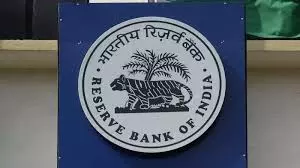RBI’s proposed Gold loan norms give banks an edge over NBFCs
Reserve Bank of India’s (RBI) proposed norms on gold lending will slow down the Rs 7.1 lakh crore (FY24) organized gold lending market with a more significant impact on shadow banks operating in this space.

Reserve Bank of India’s (RBI). (Image:DC)
Mumbai: The Reserve Bank of India’s (RBI) proposed norms on gold lending will slow down the Rs 7.1 lakh crore (FY24) organized gold lending market with a more significant impact on shadow banks operating in this space. Analysts predict a significant impact on gold financiers with potential implications for business growth, market share operating models, compliance and risk management systems.
For instance, the norms give a free hand to banks to offer all income generating loans, including agriculture gold loans, with Loan To Value (LTV) ratio determined by their Board approved policy and not restricted to 75 per cent, while NBFCs will have to maintain a LTV ceiling of 75 per cent for all gold loans, irrespective of the purpose (whether for income generation or consumption) of the sanction. Also the 75 per cent LTV cap will be applicable throughout the loan tenure requiring periodic monitoring.
According to Shweta Daptardar, banking analyst, Elara Capital, this would reduce loan sizes and hit disbursals by 5-10 per cent especially for NBFCs, increase their operational complexity due to the requirement of end-use verification and affect demand of consumption loans. Banks on the other hand will gain an edge with the LTV flexibility offered.
“Post these guidelines, we analyze the growth forecast scenario, the base-case of which indicates that the Rs 7,100 billion (FY24) organized gold lending market may grow at a 12.1 per cent CAGR through FY24-27, down from the earlier industry CAGR of 15 per cent and 19.8 per cent CAGR in FY20-24. While demand for gold loan and lower penetration (around 6 percent) offer tailwinds, competitive intensities from the banks may flare up,” added Daptardar.
The tenor for consumption loans (loans extended to individuals for the purpose of meeting emergency requirements, medical needs, purchase of consumer durables, personal consumption needs) with bullet repayments have been capped at 12 months. For co-operative banks/regional rural banks RRBs the amount has been capped to Rs 5 lakh per borrower. In
the case of bullet repayment loans (where the principal is due for repayment at the maturity of the loan), the LTV ratio is proposed to be computed by treating the total amount repayable by the borrower at maturity rather than the amount sanctioned at origination.
the case of bullet repayment loans (where the principal is due for repayment at the maturity of the loan), the LTV ratio is proposed to be computed by treating the total amount repayable by the borrower at maturity rather than the amount sanctioned at origination.
“Consequently NBFCs would have to sanction lower amounts (by upto 25 per cent vis-à-vis the current practice) per weight the gold. Further renewals of such loans can only happen on complete servicing of the interest which could impact disbursements till borrowers adapt to the new requirements,” said rating agency ICRA Ltd in a report.
“For example, for a 12-month bullet repayment taken at 20 per cent yield per annum, NBFCs would be able to lend only up to 62 per cent of the gold value vis-à-vis up to 75 per cent being offered as per the current practice,” added ICRA.
Further, doorstep gold loans and co-lending arrangements for both banks and NBFCs are likely to be impacted by stringent requirements for handling and storage of gold collateral.
( Source : Asian Age )
Next Story
